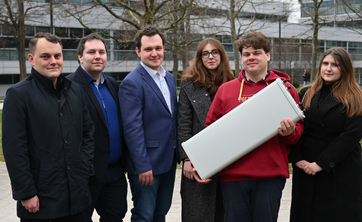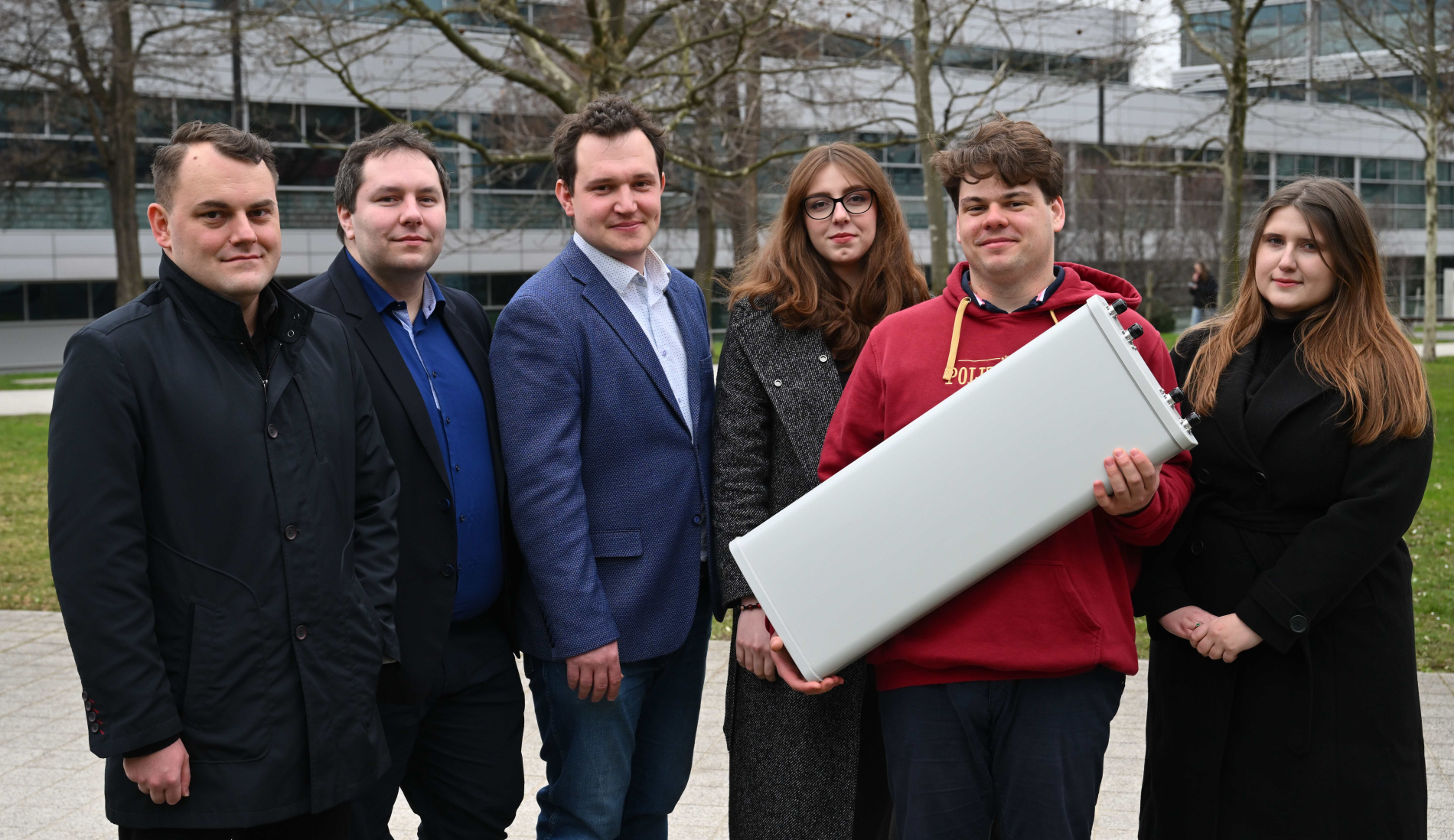
WUST operates a node of the PL-5G National Laboratory. Its part is the first in Europe private 5G network operating in Stand Alone mode in the 26GHz millimetre wave band launched by W4 scientists, as well as a laboratory of services and Internet of Things.
„National research laboratory for 5G networks and services with its surroundings (PL-5G)" is a project implemented since 2021 by a consortium led by Warsaw University of Technology. Gdańsk University of Technology, the National Research Institute of Communications, the AGH University of Science and Technology in Kraków, Poznań Supercomputing and Networking Centre and Wrocław University of Science and Technology also cooperate in the project.
It includes building a unique research infrastructure in the country to conduct practical research on 5G technology and services. The total budget of the project is over PLN 220 million.
It includes three laboratories:
- 5G network laboratory – built on the basis of solutions provided by 5G technology manufacturers.
- 5G simulators and measurement equipment laboratory – provided with 5G technology simulators and measurement equipment.
- 5G environment laboratory – provided with devices and software used to develop new network solutions, platforms and applications based on 5G technology.

And it was the latter group of problems that was the focus of the team from Wrocław University of Science and Technology led by Dr. Patryk Schauer from our Faculty. It included scientists from the Department of Computer Science and Systems Engineering, supported by researchers of the Department of ICT and Telecommunications.
– The equipment we have launched at WUST includes primarily 5G networks accessed with 5G New Radio, LTE and non3GPP (WiFi) techniques, but also a set of general-purpose computing resources and those specialized for machine learning and simulations in virtual reality environments. There are also laboratory and in-field stations for research on the broadly understood Internet of Things – says Dr. Patryk Schauer from the Department of Computer Science and Systems Engineering.
In addition, the infrastructure is prepared to provide separated network and computing environments to ensure tha the works can be performed with adequate security.
Completely new possibilities
So far, 5G networks in Europe have been built based on bands below 3 GHz. Telecoms in Poland have only recently started using the N78 band (3500GHz), dedicated exclusively to the 5G network, i.e. no longer shared with the LTE technology. In addition, telecom networks are launched in the NSA (Non-Standalone) mode, which assumes coexistence with LTE and the use of the LTE network core. The 5G SA (Standalone) network built at Wrocław University of Science and Technology is based on both the 5G New Radio part and the 5G core.
5G SA network cells operating in the n258 (25GHz) band were launched as part of the PL-5G node at Wrocław University of Science and Technology, at the AGH University of Science and Technology in Kraków and at Poznań Supercomputing and Networking Center.
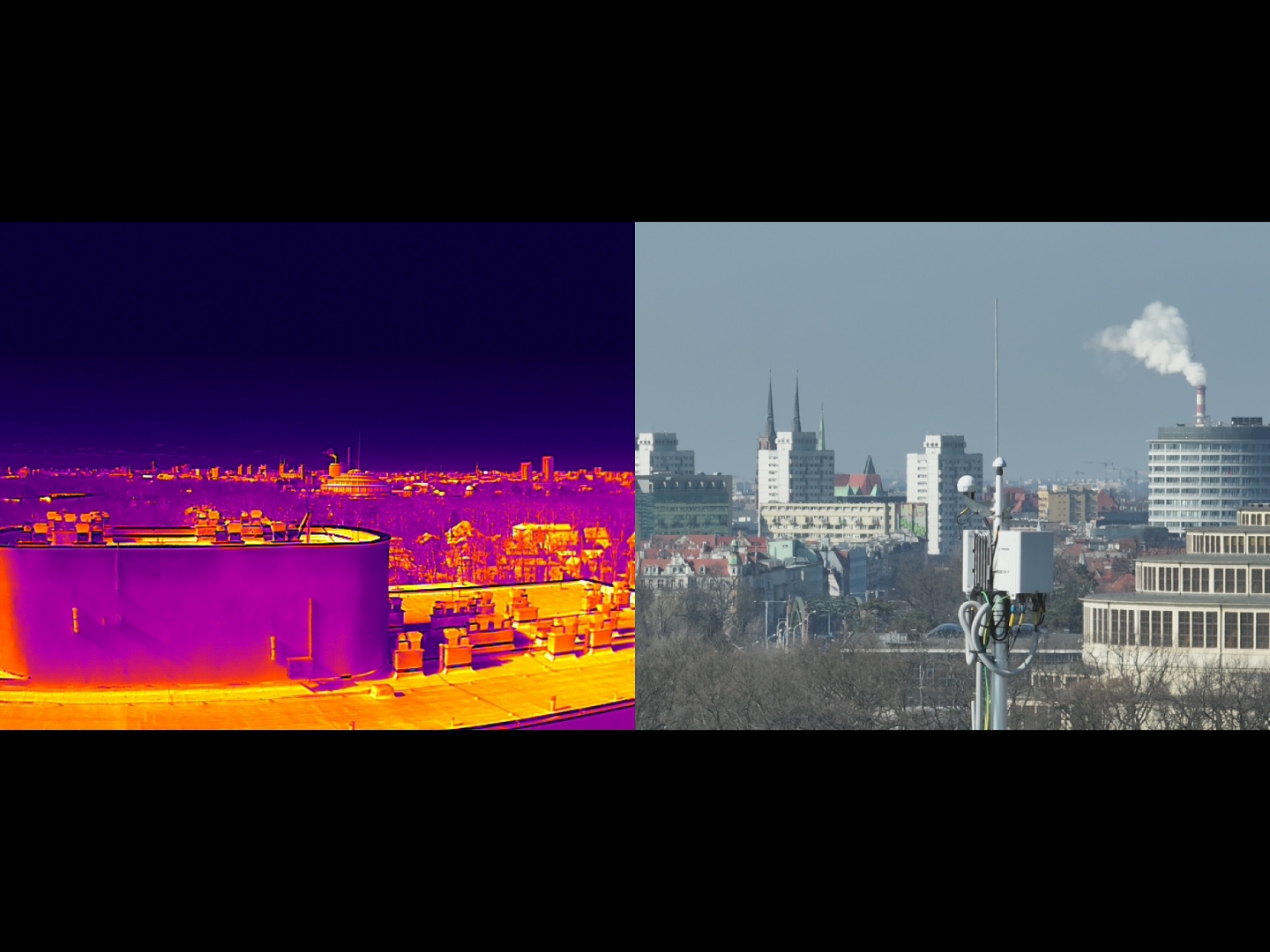
– Poor usage of this part of the electromagnetic spectrum allows operation in very wide frequency channels, practically unavailable in the lower parts of the spectrum, due to their high occupation by numerous services and purposes. Moreover, the main disadvantage of this band, i.e. very limited range resulting from high attenuation, has been turned into an advantage. For example, the entire transmitter capacity, multiplied by the use of wide frequency channels, can be concentrated in a small area, with a radius measured in tens of meters – explains Prof. Kamil Staniec from the Department of ICT and Telecommunications.
– Placing a number of such transmitters along, for example, a promenade, a shopping avenue, or a conference center allows an unprecedentedly large surface capacity, measured in megabits per second per square meter – he adds.
From the point of view of the research laboratory, such a private 5G network in this band provides previously unavailable opportunities to conduct propagation research, i.e. verifying the impact of various factors on signal range and quality in real conditions.
The first such network in Europe
An interregional 5G network was developed in its dedicated N77u (3.9 GHz) and N258 (25 GHz) bands. It is based on a network core which is common to all of the consortium members. The interregional network is primarily a space for testing services, as well as work that does not disrupt the operation of the entire system.
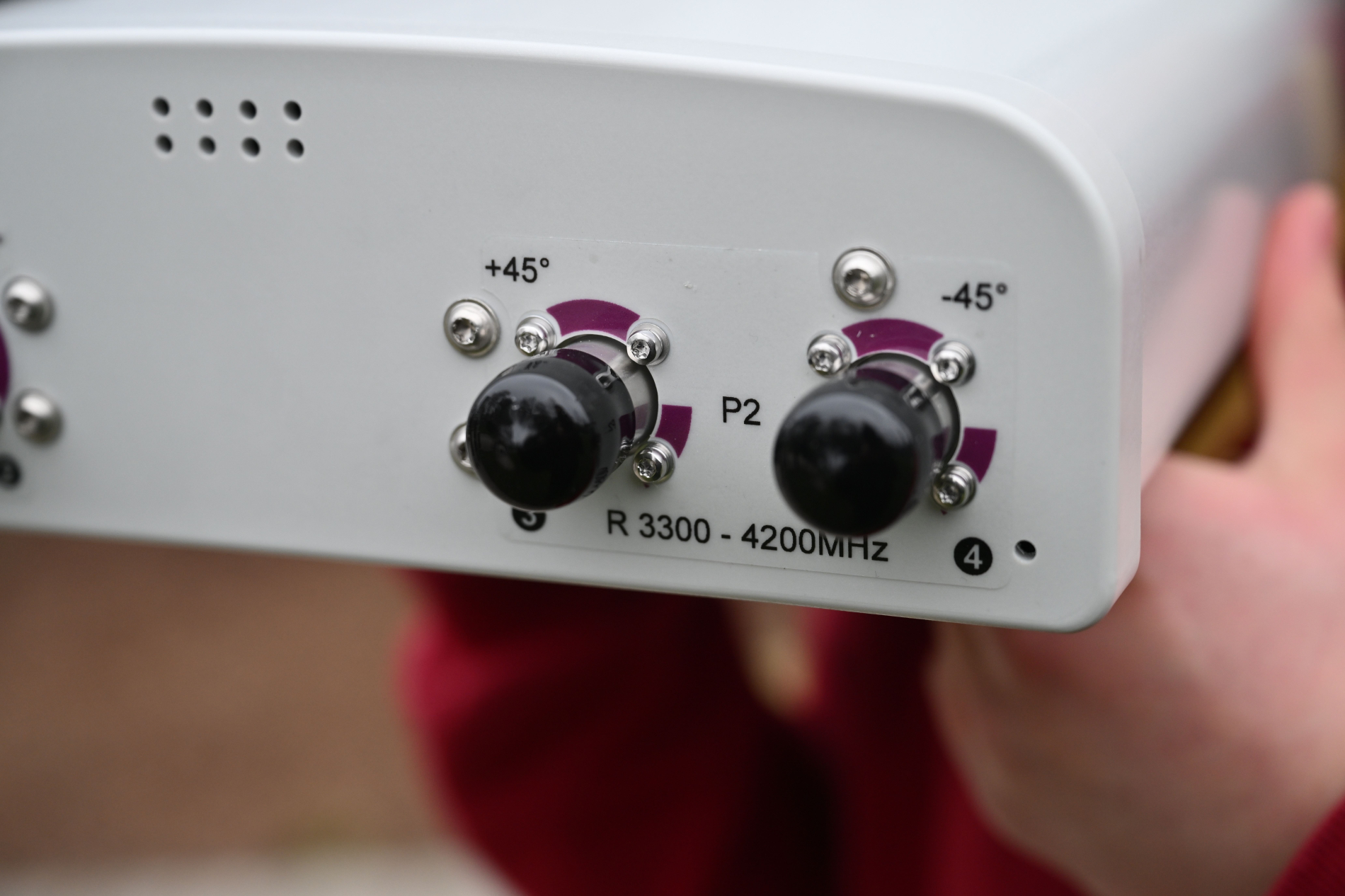
Local networks in the N77u and N40 bands were also made available at WUST. They enable research to be carried out independently of the activities of other units, even such that will be intended to trigger their failure.
The interregional network (core and radio part N77 and N258) was built by Innergo, based on Nokia solutions. In addition, the 5G Network Laboratory is equipped with the apparatus and software from Amarisoft, Radisys, AW2S, Benetel and Fraunhofer.
A specialized computing node and a new laboratory
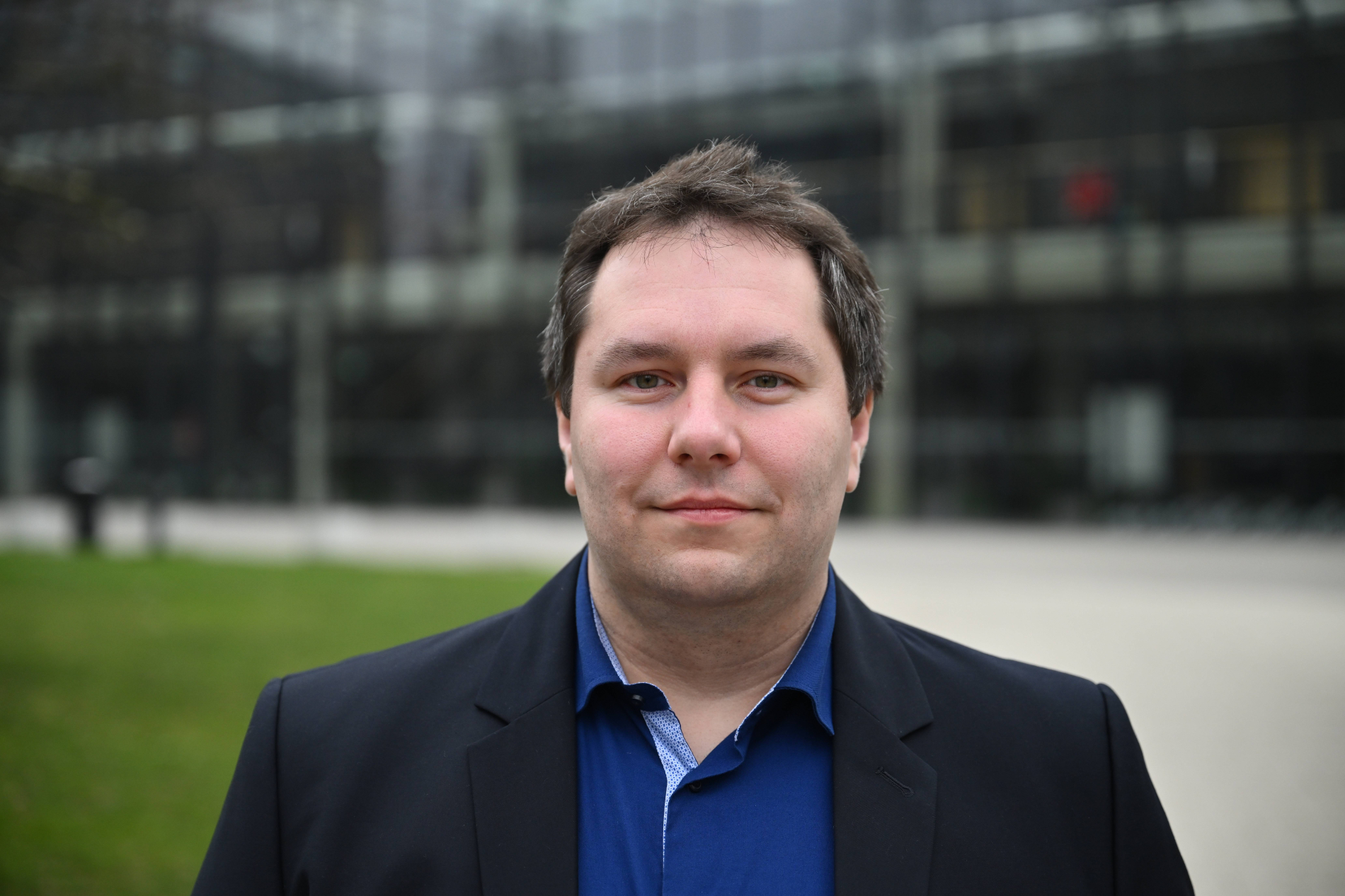 The PL-5G Laboratory is a space used to test not only networks, but also 5G services and surroundings. Therefore, a specialized computing node was created at WUST to aid machine learning and simulations in virtual reality environments. It is equipped with specialized Nvidia DGX and Nvidia OVX servers.
The PL-5G Laboratory is a space used to test not only networks, but also 5G services and surroundings. Therefore, a specialized computing node was created at WUST to aid machine learning and simulations in virtual reality environments. It is equipped with specialized Nvidia DGX and Nvidia OVX servers.
– They allow comprehensive studies of solutions, taking into account both communication and computational issues, from the level of the physical layer of the access network to data-processing services in the cloud. We can therefore conduct research for entities that do not have specialized infrastructure but want to prepare their solutions for further integration and then implementation – says Dr. Łukasz Falas from the Department of Computer Science and Systems Engineering.
Networks such as 5G are being developed to enable services in many areas that rely on the communication of various devices. They have to meet often very different requirements. Therefore, as part of the PL-5G node at WUST, test stations were also developed and equipment was purchased to enable research and development work, including: in the area of the Internet of Things and virtual and augmented reality.
– One of such stations is a Living Lab. This is a space where researchers carry out their every-day work, but at the same time it is also itself the object of our research and testing in the field of intelligent building solutions –says Dr. Patryk Schauer.
It is equipped with stations for prototyping devices based on the Internet of Things, as well as 3D printers, scanners, and AR (augmented reality) and VR (virtual reality) equipment. “It can use drones, both flying and driving, which can be used as data sources, carriers of measurement equipment and a base for prototyping complex solutions – adds Dr. Schauer.
Some of the drones used in this space communicate via private 5G networks built at the University. As a result, they provide scientists with the collected vision, measurement and control data.
Equipment and knowledge available to everyone
The laboratory is open to both scientists and students from our University. But W4 team members also invite companies and commercial entities looking for solutions to support their activities.
With them in mind, Wrocław University of Science and Technology has prepared an extensive offer of research services. Interested persons may contact Dr. Patryk Schauer (patryk.schauer@pwr.edu.pl)) or Dr. Łukasz Falas (lukasz.falas@pwr.edu.pl).
